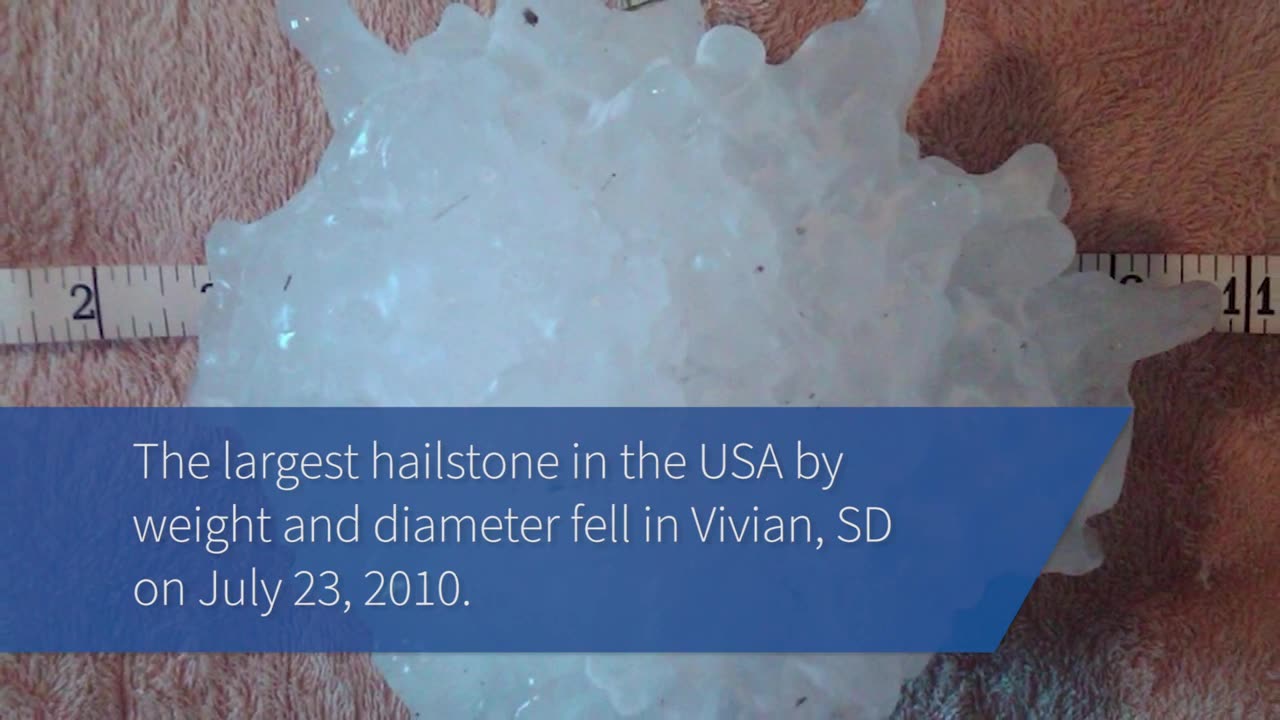Premium Only Content

The Science of Hail - Meteorology - Weather Basics
Chunks of ice that fall from the sky can cause serious damage to property, and injuries to people and animals. But how does hail form?
Hail is a form of solid precipitation.[1] It is distinct from ice pellets (American English "sleet"), though the two are often confused.[2] It consists of balls or irregular lumps of ice, each of which is called a hailstone.[3] Ice pellets generally fall in cold weather, while hail growth is greatly inhibited during low surface temperatures.
Estimating Hail Size
Hail size is often estimated by comparing it to a known object. Most hailstorms are made up of a mix of different sizes, and only the very largest hail stones pose serious risk to people caught in the open. When reporting hail, estimates comparing the hail to a known object with definite size are good, but measurements using a ruler, calipers, or a tape measure are best.
Pea = 1/4 inch diameter
Mothball = 1/2 inch diameter
Penny = 3/4 inch diameter
Nickel = 7/8 inch
Quarter = 1 inch — hail quarter size or larger is considered severe
Ping-Pong Ball = 1 1/2 inch
Golf Ball = 1 3/4 inches
Tennis Ball = 2 1/2 inches
Baseball = 2 3/4 inches
Tea cup = 3 inches
Softball = 4 inches
Grapefruit = 4 1/2 inches
More More Meteorology Videos
https://rumble.com/playlists/JfAj918PQuc
-
 3:51
3:51
Earth Wind and Fire
1 month agoSpaceX engineers In helicopter capture the devastation in North Carolina
6638 -
 LIVE
LIVE
2 MIKES LIVE
3 hours ago2 MIKES LIVE #140 Open Mike Friday
783 watching -
 24:39
24:39
RealitySurvival
4 hours agoDon't Ignore The Warning Signs Of The Chaos Still To Come!
9.48K -
 59:29
59:29
Exploring With Nug
7 hours ago $3.10 earnedHe Left Them All To Die While He Snuck Out To Save Himself!
28K -
 42:41
42:41
PMG
4 hours ago $0.78 earnedHannah Faulkner and Alex Newman | Beneath Sheep's Clothing
19.8K -
 33:25
33:25
In The Litter Box w/ Jewels & Catturd
23 hours agoThe Liberal Meltdown Continues | In the Litter Box w/ Jewels & Catturd – Ep. 687 – 11/8/2024
85.2K40 -
 1:34:20
1:34:20
Tucker Carlson
6 hours agoVivek Ramaswamy: Trump’s Sweeping Victory, & What It Means for the Future of Government Bureaucracy
122K537 -
 36:44
36:44
TheRealCoachPain
1 day ago $4.69 earnedWHEN IT HURTS - The Album | Coach Pain's Best Motivational Speeches of All Time
51.6K3 -
![[Stream #12] Brand New Planet Coaster 2!! What Chaos Can We Cause??](https://1a-1791.com/video/s8/1/G/6/-/q/G6-qu.0kob-small-Stream-10-Brand-New-Planet-.jpg) LIVE
LIVE
OneRandomDolly
5 hours ago[Stream #12] Brand New Planet Coaster 2!! What Chaos Can We Cause??
277 watching -
 1:59:34
1:59:34
Twins Pod
21 hours agoThe Forbidden Technologies They Don't Want Us To Know About | Twins Pod - Episode 38 - Ashton Forbes
113K11